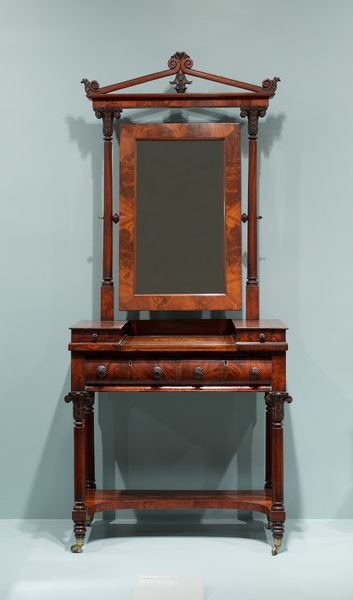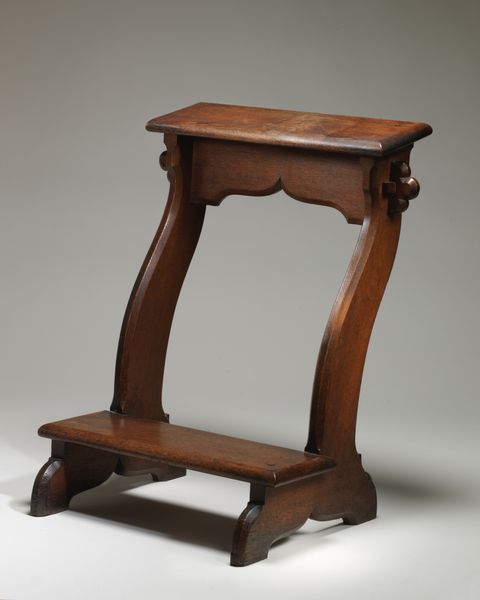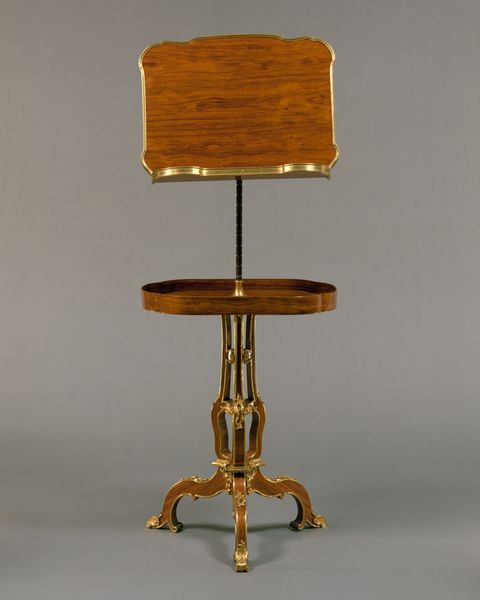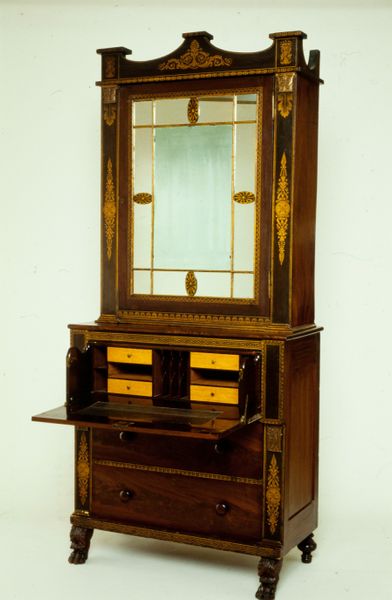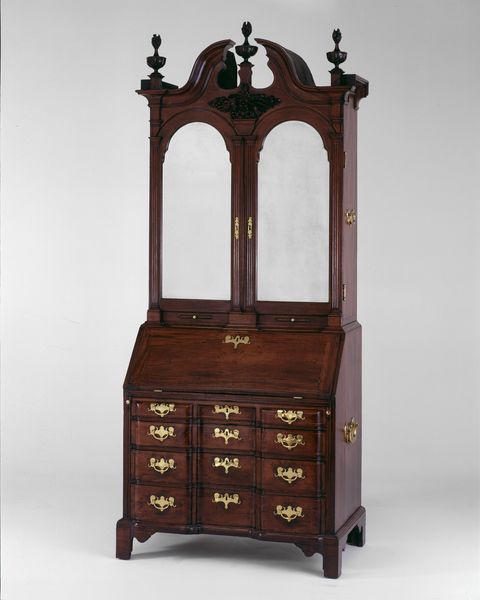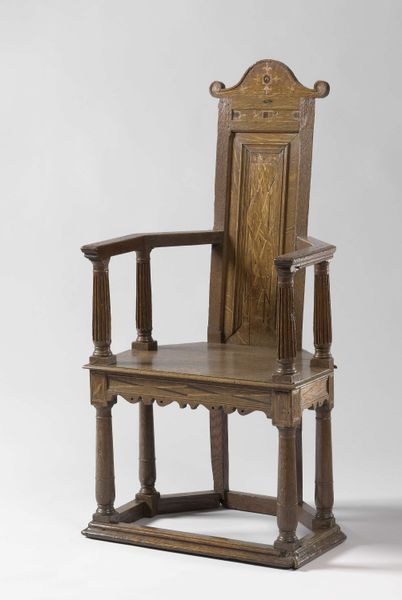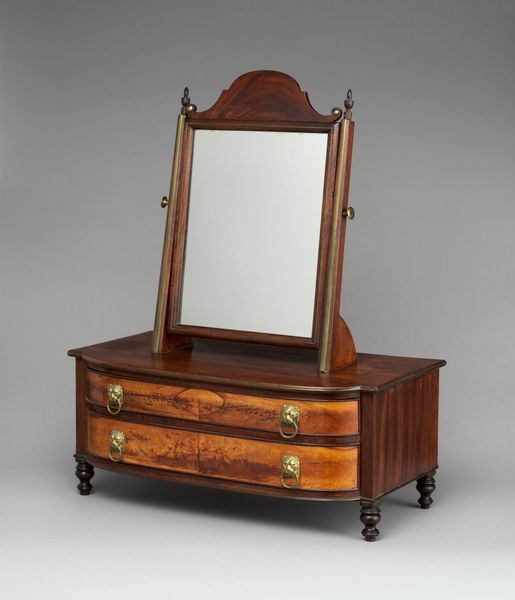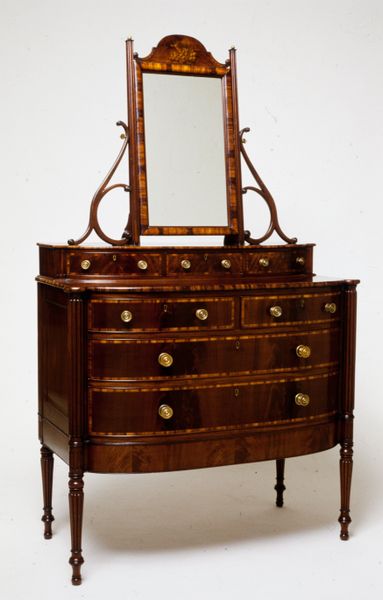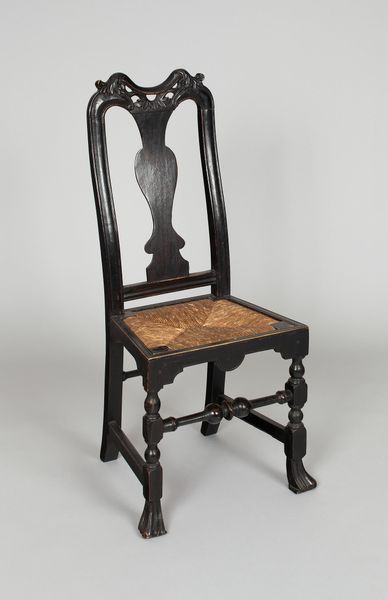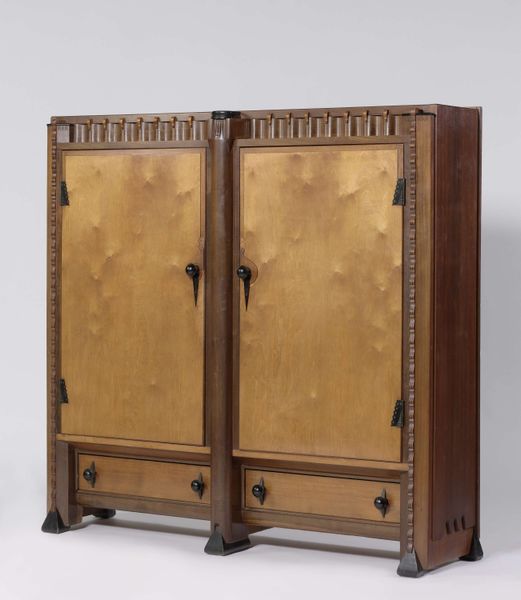
brass, wood
#
neoclacissism
#
brass
#
furniture
#
united-states
#
wood
Dimensions: 104.1 × 188.6 × 61 cm (41 × 74 1/4 × 24 in.)
Copyright: Public Domain
Curator: Looking at this piece, my first thought is how seamlessly it blends utility with aspiration. This is Duncan Phyfe's Dressing Mirror, crafted around 1820. Editor: It has an assertive presence, doesn't it? The wood grain immediately draws the eye. What kind of wood is that, and what does it tell us about its creation? Curator: Phyfe primarily used mahogany and rosewood, highly sought after for their rich color and striking grain patterns. This choice, combined with the brass accents, signals the rising economic power and status of his clientele. These were status symbols meant to project success. Editor: Absolutely. The mirror isn’t just reflective, the materials themselves become a reflection of wealth. You can almost trace the history of resource extraction through these pieces, following the trade routes that brought exotic materials to New York workshops. Was this mirror mass-produced? Curator: While Phyfe’s workshop was prolific, each piece retained a handcrafted quality. We should also consider the division of labor; Phyfe himself may not have been at the bench crafting the piece directly. Editor: Which really complicates notions of individual artistic genius, right? Instead, it was about managing a shop that produced status symbols for a growing mercantile class. What about those brass embellishments? Curator: The brass detailing, particularly the classical motifs and feet, further reinforce the era’s fascination with ancient Greece and Rome, connecting the owner with a lineage of power and refined taste. These little details amplified the owner's connection to a past golden age and their hopes for the future. Editor: Yes, a potent display of class aspiration articulated through meticulous material choices and the labor of skilled artisans, all within a framework of historical and cultural references carefully selected and applied. Ultimately, these mirrors didn’t just reflect an image; they projected an identity, highlighting who someone wanted to be, and in what place in society they saw themselves. Curator: A fascinating artifact, a looking glass into an era of burgeoning capitalism and social climbing. Editor: Indeed. It certainly shifts how one might traditionally view such an object of everyday use, no?
Comments
No comments
Be the first to comment and join the conversation on the ultimate creative platform.
